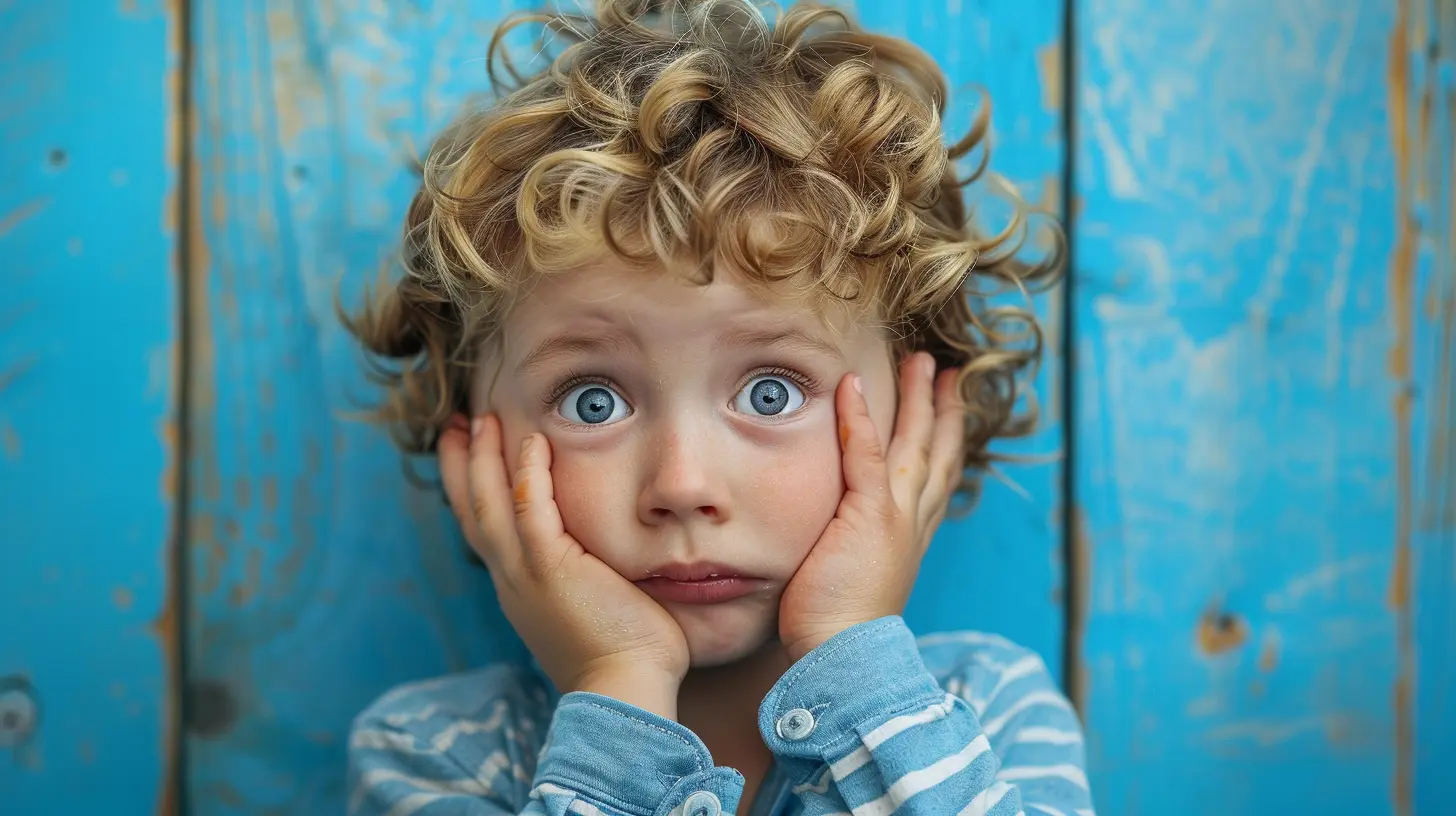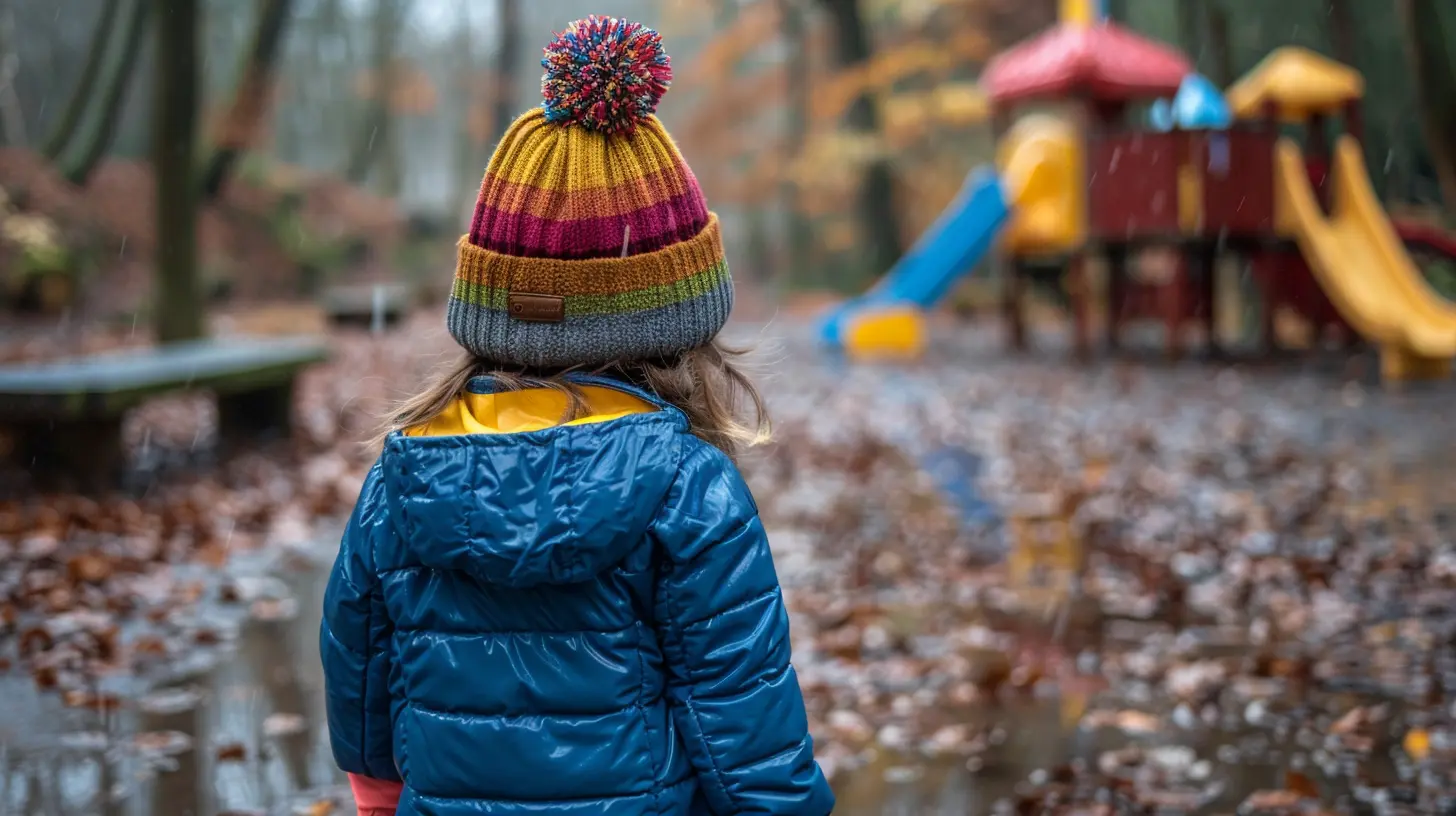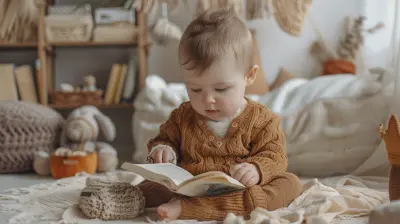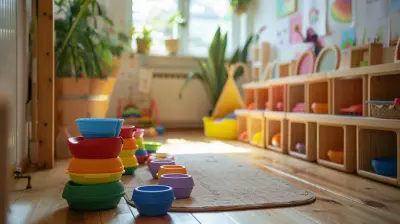How to Handle Separation Anxiety in Preschoolers
10 February 2025
Separation anxiety in preschoolers is one of those parenting challenges that can tug at your heartstrings and, at times, even test your patience! You're dropping your little one off at school or daycare, and suddenly, they're clinging to your leg with the strength of a superhero, tears streaming down their face. You might feel helpless, unsure of how to ease their fears and make the transition smoother.
But don't worry! You're not alone — and there's good news. Separation anxiety is a completely normal part of child development, especially for kids between 1-4 years old. Many children experience it when they begin preschool, but with the right strategies, you can help ease this difficult phase.
In this article, we’ll dive deep into separation anxiety, why it happens, and, most importantly, how to help your little one manage it like a champ!

What is Separation Anxiety in Preschoolers?
Separation anxiety is a developmental stage where a child experiences excessive fear or discomfort when they're separated from their primary caregiver, typically a parent. In preschoolers, this often presents itself as crying, tantrums, or reluctance to participate in activities when they are away from their parents.It's important to remember: Separation anxiety is completely natural. Think about it — your little one has spent a significant amount of their lives being close to you or another caregiver. Preschool can, all of a sudden, feel like this giant leap into an unfamiliar world. No wonder it’s a bit unsettling!
Signs of Separation Anxiety
Here’s what could tip you off that your preschooler is struggling with separation anxiety:- Crying or tantrums when it’s time to leave for school or daycare.
- Clinging to you excessively.
- Complaining of physical symptoms like headaches or stomachaches before drop-off.
- Refusing to participate in classroom activities or staying away from peers.
- Trouble sleeping alone or needing extra comfort at night.
While some level of this behavior is totally normal, if it's intense and persistent, it’s worth exploring some practical solutions to help your child adjust.

Why Does Separation Anxiety Happen?
To understand how to handle separation anxiety in preschoolers, it's helpful first to figure out why it happens. It really boils down to one main thing: your child's growing understanding of the world and their place in it.At this age, their emotional development is in full swing. They are developing attachments, routines, and a sense of security based on their environment. When they suddenly have to leave the safety and comfort of home for a bustling classroom full of new faces, it can feel overwhelming. From their perspective, it's less about not wanting to go to school and more about feeling afraid of being apart from their safe anchor — you.
Common reasons behind separation anxiety include:
- Fear of the unknown: Preschool or daycare is a brand-new experience!
- Change in routine: Kids thrive on routine. Any shift, like starting school, stirs up anxiety.
- Developmental stage: At this age, toddlers are just beginning to understand that they are separate from you, which can be a little scary!
Understanding why your child could be feeling this way means you’re already halfway to solving it.

How Long Does Separation Anxiety Last?
Now, here’s the good news: Separation anxiety typically fades as your child starts to adjust to their new routine. It might take a few weeks, or in some cases, a couple of months, but they will gradually become more comfortable with the idea of being away from you.Still, that doesn’t exactly help when you're facing tear-filled goodbyes day after day, right? That’s where we come in with some helpful strategies to make handling separation anxiety a little easier for both you and your preschooler.

Effective Strategies for Handling Separation Anxiety in Preschoolers
So, how can you help your little one navigate this emotional rollercoaster? Let’s dive into some practical, real-world strategies:1. Create a Goodbye Ritual
Kids love routine, and one of the simplest things you can do is develop a consistent goodbye routine. Whether it’s a special high-five, a kiss on the forehead, or a little "see you later, alligator," this ritual gives your preschooler a sense of predictability and comfort. It acts as a signal that says, "I’m coming back, and everything’s okay."2. Practice Separation Before School Begins
To ease into the idea of being apart, try practicing short separations before the big day. Leave your child with a trusted caregiver or family member for brief stints. This gives them practice being away from you in a safe, controlled environment. Over time, they’ll become less fearful of separation because they have evidence that you always come back.3. Be Calm and Reassuring
Your child is a pro at reading your emotions. If you’re feeling stressed or anxious, they’ll likely pick up on it and feel the same way. The key is to remain calm and positive. Avoid dragging out goodbyes, as a prolonged farewell can actually heighten anxiety. Instead, keep it short and sweet, but full of love!4. Provide Comfort with a Transition Object
Sometimes, having a little piece of home can bring your child comfort. A favorite stuffed animal, blanket, or even a small token from you (like a scarf or a photo) can serve as a security blanket during the school day. It’s a gentle reminder that you’re always thinking of them.5. Encourage Independence
Building your child’s independence at home can help reduce separation anxiety at school. Simple tasks like getting dressed, helping with chores, or playing solo for short periods can provide them with a greater sense of control and confidence when apart from you.Start small — like encouraging them to play on their own for 10 minutes while you’re in the next room. Gradually, they’ll become more comfortable being independent.
6. Talk About It
Communication is key! Encourage your child to share their feelings and acknowledge them. You can validate their emotions by saying something like, "I understand that it feels scary when Mommy leaves, but remember, we’ll always come back to pick you up after school." Use books or stories about separation anxiety to show your child that other kids feel the same way — and things get better!7. Arrive Early to Help Them Acclimate
Arriving at preschool a little early gives your child time to get familiar with the classroom, the teacher, and the other kids. This slower transition can help them feel more comfortable and reduce anxiety about stepping into the unknown.8. Create a Consistent Routine
Children thrive on predictability. Establish a consistent morning routine that includes enough time to get ready without feeling rushed. When your child knows what to expect, it can ease any anxiety about going to school.9. Be Patient
Finally, patience is everything. While it might be tempting to rush the process, remember that each child is unique, and they all adjust in their own time. Stick with the strategies above, and eventually, the tears will fade, and your little one will be more excited to head off to preschool.What NOT to Do When Handling Separation Anxiety
While we’ve focused a lot on what you should do, it’s also important to be aware of some common pitfalls to avoid when managing separation anxiety:1. Don’t Sneak Out
Sure, sneaking out may seem like an easy way to avoid the waterworks, but it can actually increase your child’s anxiety long-term. If they suddenly realize you’re gone without any warning or goodbye, they may feel abandoned and become even more fearful the next time you leave.2. Don’t Get Frustrated
While it’s completely understandable to feel frustrated or even overwhelmed by repeated tear-filled drop-offs, try not to let it show. Reacting with frustration or impatience can make your child feel even more insecure and anxious.3. Avoid Giving In
When your child cries or protests, it’s so tempting to scoop them up and cancel school for the day. Resist the urge! Giving in reinforces the idea that school is something to be afraid of, and it can make it harder for them to adjust in the future.When Should You Be Concerned About Separation Anxiety?
While separation anxiety is normal, there are times when it might indicate something more serious. If your child’s anxiety is severely disrupting their ability to attend school or socialize, or if it continues for months without improvement, they might be experiencing Separation Anxiety Disorder (SAD).It’s relatively rare, but if you suspect your child may have this disorder, it’s best to consult with a pediatrician or a child psychologist to get additional support.
Conclusion
Handling separation anxiety in preschoolers is no easy feat, but with love, patience, and a few helpful strategies, you can guide your little one through this tough stage. Remember that separation anxiety is a natural part of growing up, and while it might feel difficult in the moment, it doesn’t last forever.By cultivating confidence, independence, and trust, you'll not only ease their anxiety now but also set them up to navigate future changes with greater resilience. After all, this phase is just one tiny step in their big journey of growth and exploration.
Hang in there — you’ve got this!
all images in this post were generated using AI tools
Category:
Parenting PreschoolAuthor:

Maya Underwood
Discussion
rate this article
10 comments
Sasha Hernandez
Separation anxiety is just your preschooler’s way of ensuring you remember who the real boss is! Don’t worry, they’ll have you back in their good graces—after snack time!
March 31, 2025 at 3:28 PM

Maya Underwood
Thank you for the lighthearted perspective! It's true that preschoolers certainly have their own way of keeping us on our toes!
Giovanna Webster
Separation anxiety: the ultimate hide-and-seek championship for parents!
March 12, 2025 at 4:19 AM

Maya Underwood
Haha, exactly! It can feel like a game, but with the right strategies, we can help our little ones navigate their feelings and build confidence.
Christa Stone
“Hang in there! You’re doing great—love conquers all fears!”
March 4, 2025 at 3:27 PM

Maya Underwood
Thank you so much for your encouragement! Love truly makes a difference during challenging times.
Alana Ruiz
What a fantastic resource for parents navigating the challenges of separation anxiety! Your practical tips and understanding approach are truly helpful. It's so reassuring to know we're not alone in this journey. Thank you for sharing these insights to help our little ones feel more secure and supported during tough times!
February 25, 2025 at 5:56 AM

Maya Underwood
Thank you for your kind words! I'm glad you found the tips helpful—supporting our little ones through this journey is so important.
Jade Gilbert
Separation anxiety in preschoolers is like a little storm cloud that needs a rainbow! 🌈 Embrace the tears with hugs, distractions, and a sprinkle of magic dust (aka fun activities). Remember, every tear shed is just a stepping stone towards their independence—and hey, you might sneak in a coffee break too! ☕️
February 16, 2025 at 4:17 PM

Maya Underwood
Thank you for this lovely analogy! Embracing those emotions with love and fun truly helps both children and parents navigate this phase together. 🌈
Yazmin Adams
Thank you for this insightful article! Separation anxiety can be so challenging for both parents and little ones. Your tips on gradually building independence and creating a comforting goodbye routine are incredibly helpful. It’s reassuring to know we’re not alone in this journey.
February 15, 2025 at 5:35 AM

Maya Underwood
Thank you for your kind words! I'm glad you found the tips helpful—it's a journey many families share, and together we can make it a little easier.
Troy Kirk
Separation anxiety is a normal part of growing up, and you’re not alone in this journey! Embrace the tears with love and patience, and remember, each little goodbye is a step toward their independence. Celebrate the tiny victories, and soon those drop-off hugs will turn into confident waves! You’ve got this!
February 14, 2025 at 5:07 AM

Maya Underwood
Thank you for your encouraging words! It's comforting to know that separation anxiety is a normal stage in development. Embracing the journey with love and patience is truly important.
Elijah Gutierrez
Turn tears into giggles: break up with worry and embrace silly distractions!
February 12, 2025 at 3:23 PM

Maya Underwood
Absolutely! Embracing fun and laughter can help ease separation anxiety in preschoolers. Silly distractions can turn anxiety into joy!
Corin McVicar
As a parent, I totally relate! It’s tough seeing those little faces filled with worry. Creating a comforting goodbye ritual has helped my kiddo feel more secure. We’re all in this together!
February 11, 2025 at 5:34 PM

Maya Underwood
Thank you for sharing your experience! Comforting rituals can make a big difference for both kids and parents. We're all learning together!
Isadora McCloud
Separation anxiety is a normal part of growing up! Embrace the small steps, offer lots of love, and keep routines consistent. Your little one will thrive with your support—you're both on this journey together!
February 10, 2025 at 4:53 PM

Maya Underwood
Thank you for your insightful comment! Embracing the journey together with love and consistency truly makes a difference in easing separation anxiety.
MORE POSTS

Eco-Friendly Traditions Your Family Can Start Today

How to Support Your Baby's Independent Play for Cognitive Growth

How to Potty Train a Child with Special Needs

Potty Training in a Montessori Home: Independence and Freedom

How to Handle Potty Training Regression: A Parent’s Guide

Managing Baby Sleep During Seasonal Changes

Instilling a Growth Mindset in Children